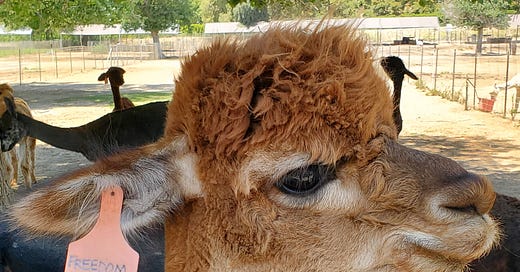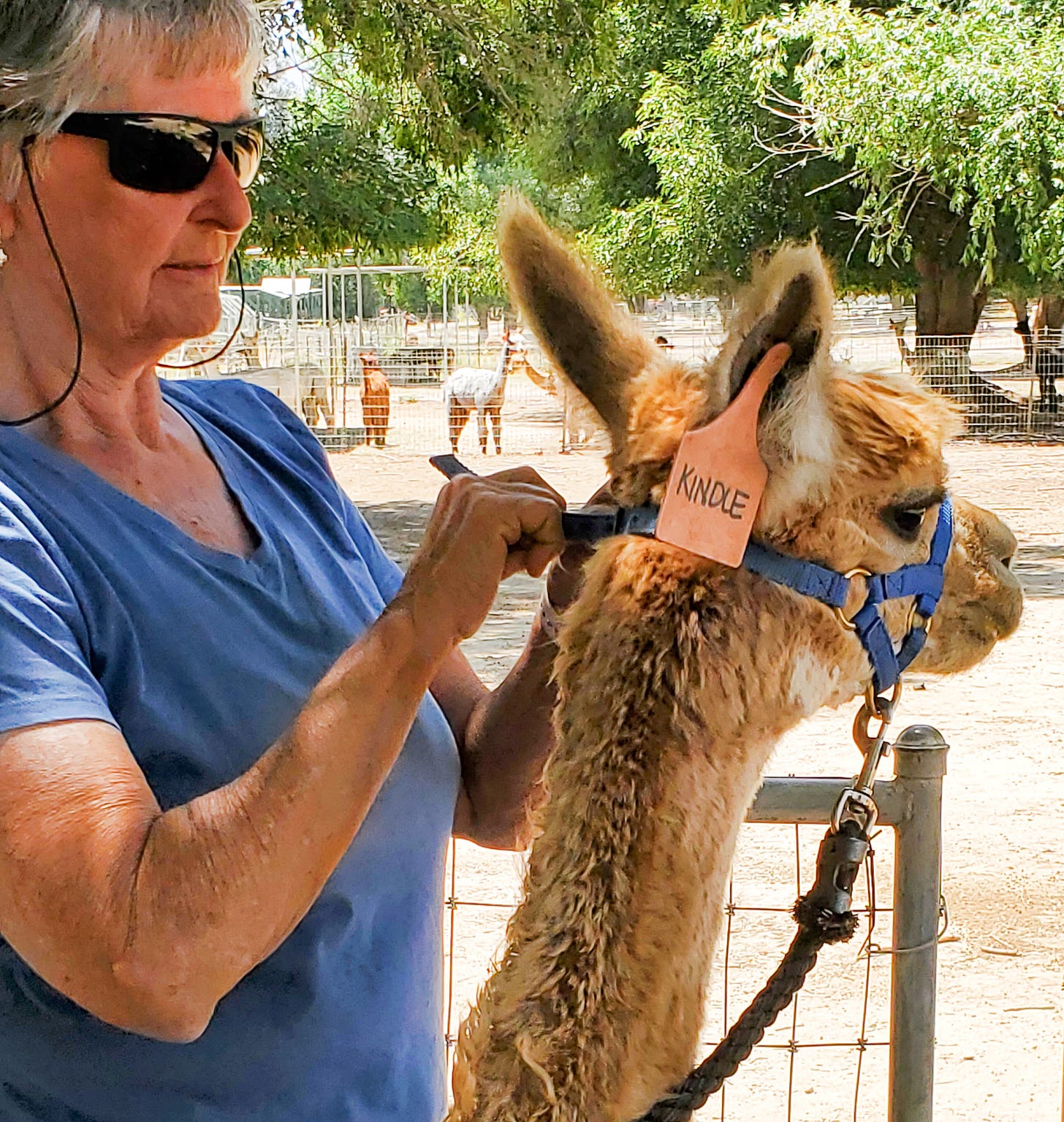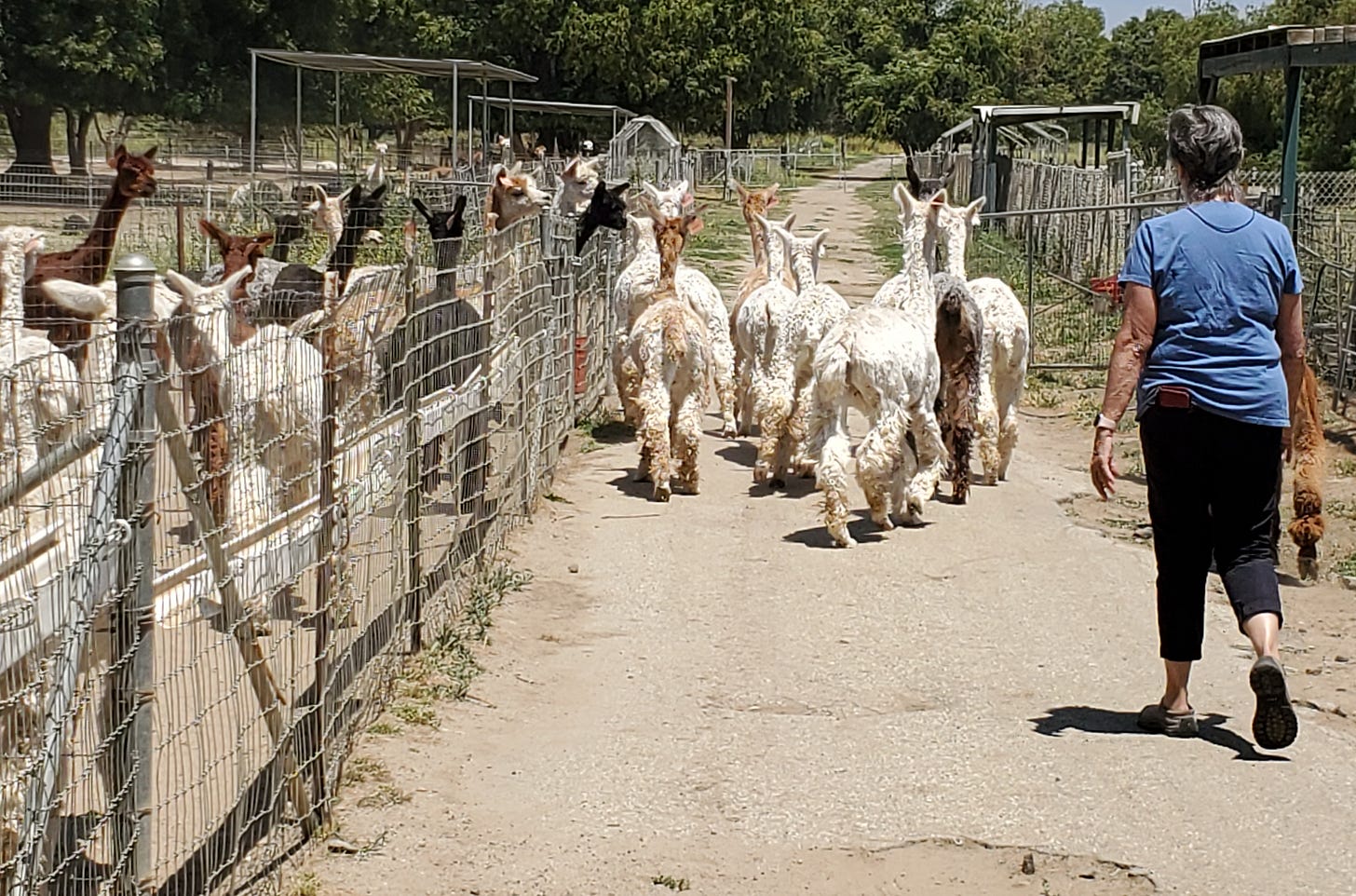Chasing Pregnant Alpacas
The pregnant Alpacas at Windy Hill are kept in specific fields according to due date. Those with earliest due dates are kept in fields closest to the barn.
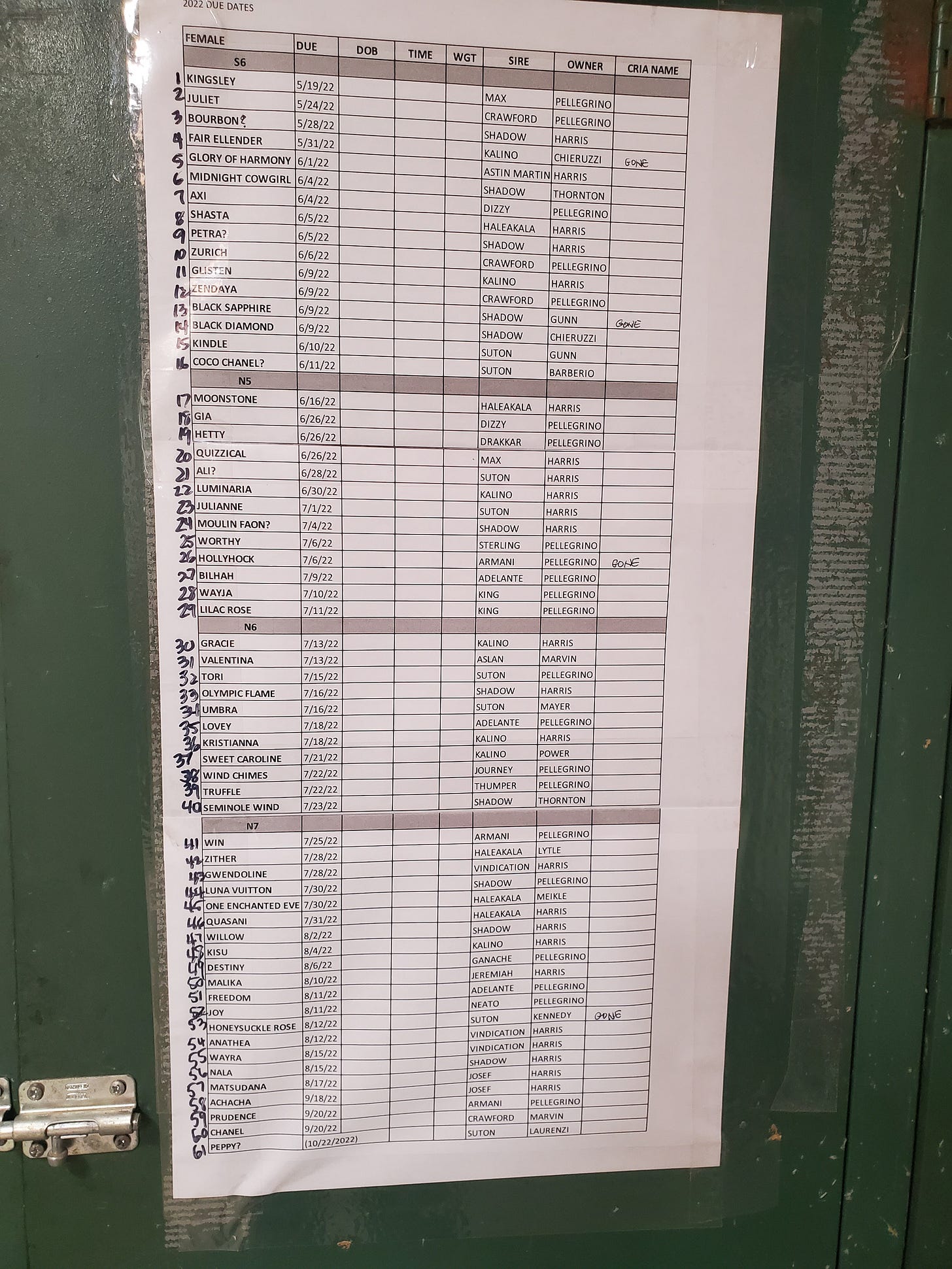
Last Thursday, there were a couple alpacas Cindy (owner of Alpacas at Windy Hill) wanted to keep a closer eye on. Because they were in a field far away from the barn, it meant we had to catch & halter them to move them to the closest field. The flexible gating system on the ranch is remarkably efficient at catching a specific alpaca. Uh. Usually.
First, we corralled the North-7 females into a smaller pen within the field. The alpacas seemed to be amused at the game of chase we were playing with them.

The pen was slightly too big to corner the ones we wanted so we went with Plan-B. Plan-B was herding the entire field to a very small pen at the west end of the ranch.
Between the north & south fields is a dirt road for the tractor & other ranch utility vehicles. Before letting them out of their field, we had to shut the gates at both ends of the road & open a small pen we would herd them into at the west end of the fields. As we opened their field’s gate, they raced out of their field to freedom . . . and straight into the dead-end small pen, as Cindy & I walk behind them.
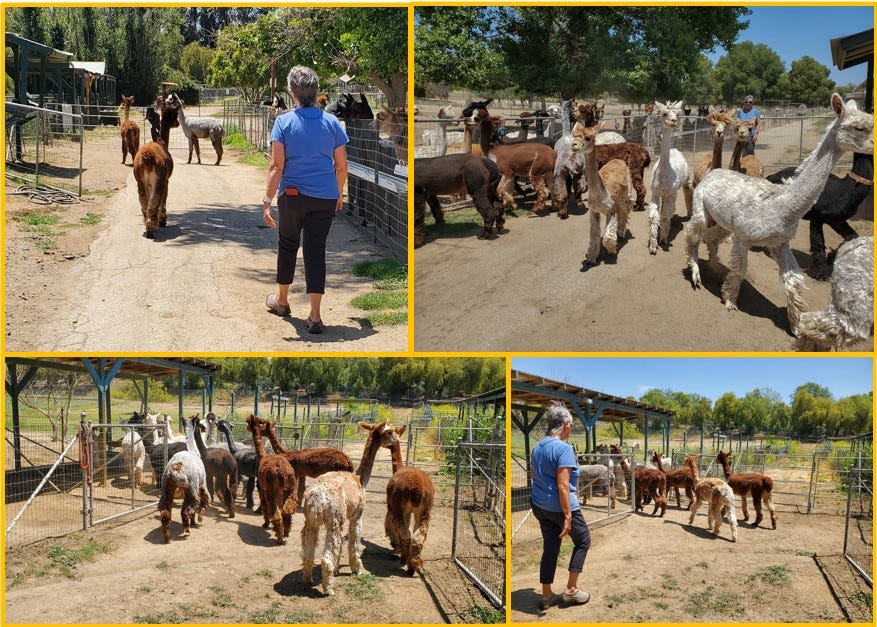
The two we were after were still resistant to being caught in the smaller pen, so Cindy shut the gate to the area containing the small pen & the small pen next to it. Then we shooed all the alpacas we didn't want out of the smallest pen leaving the one we did want in the small pen alone. Much easier to catch & halter that way. Cindy was also able to catch & halter another one to take her to the barn later for eye treatment.
After moving & releasing Kindle, the alpaca Cindy wanted to keep an eye on (in case her due date was sooner than first assumed) to the soonest-due field, we opened the small pens' gates & herded all the others back to their original field.
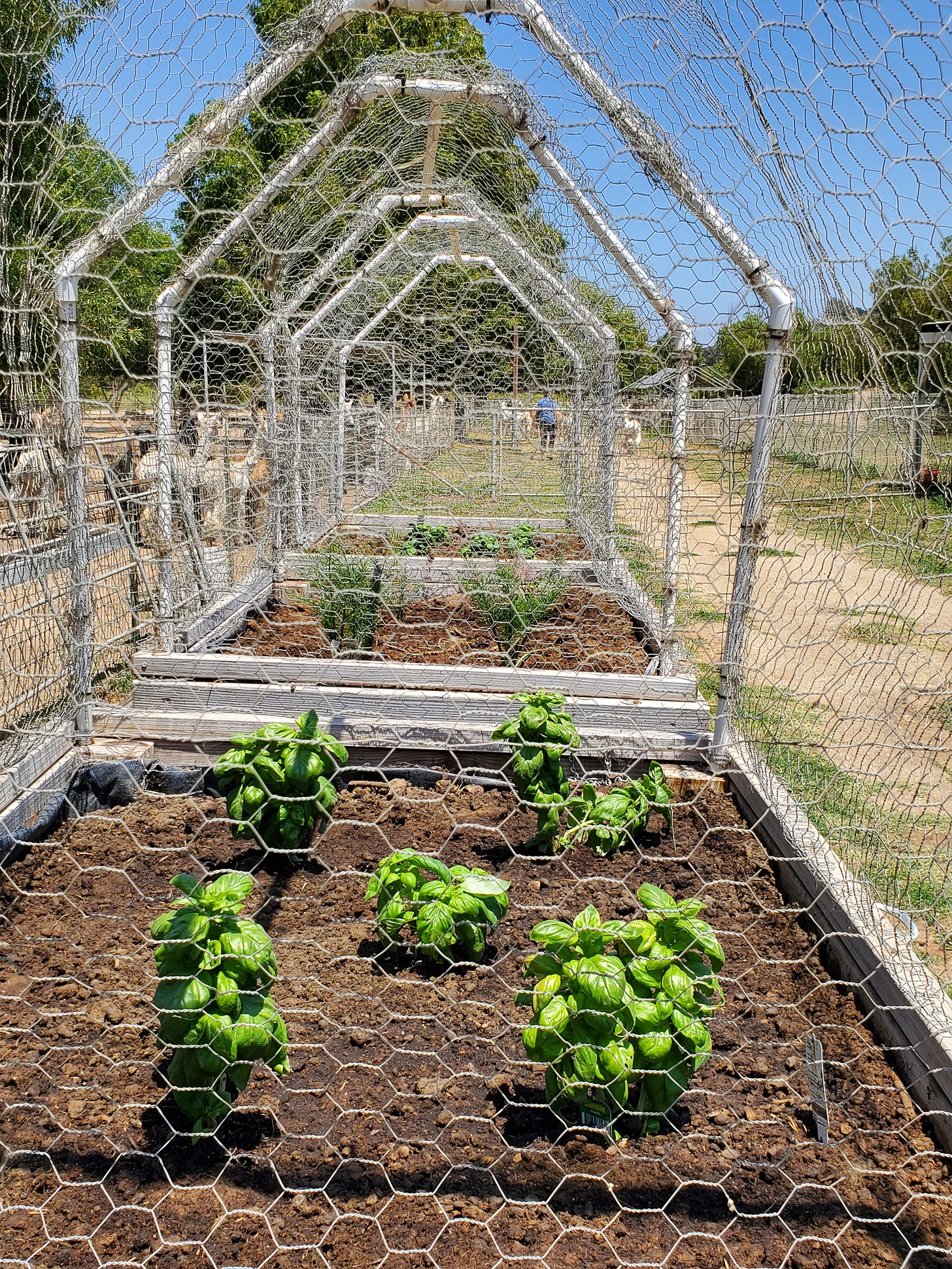
After the alpacas were back in their field, Cindy still needed to do vet duty treating the other captured pregnant alpaca's eye allergy, whom we took to the barn. Steroids, though more desirable to treat this kind of allergy, is deadly poisonous to pregnant &/or lactating alpacas as it causes miscarriage & death in any amount no matter how minuscule. Years ago, some clients had an alpaca staying on the ranch who had a serious eye infection. They insisted on having their local ophthalmologist apply human eye meds on their alpaca & behold - it cleared up the infection! Since then, Cindy follows the same protocol learned from local ophthalmologist.
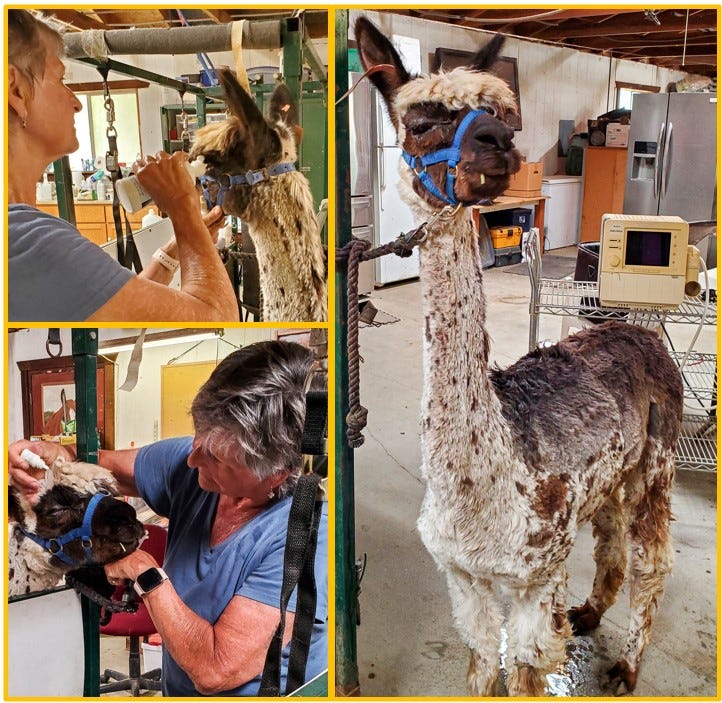
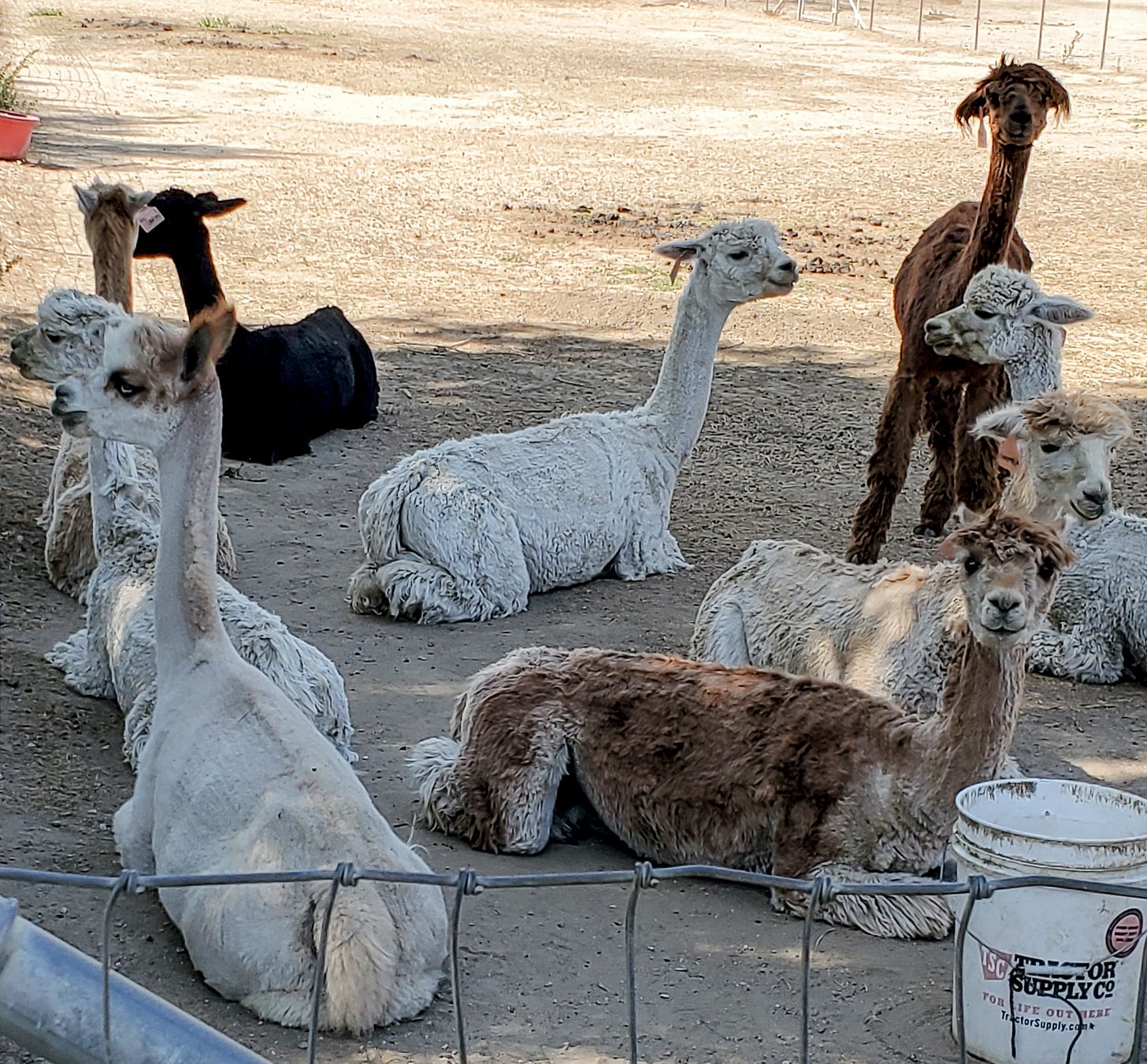
Sustainability trivia
An alpaca eats 1 bale of hay per month as compared to cattle, each of whom can consume up to 2 bales a day.
Word of the Day
Medullation: a hair that has a medulla, i.e., a hollow space, in its center/cortex. Medullation is present to a greater or lesser extent in the fleece of all animals. This is what I found out about medullation in fiber:
Alpaca fleece isn’t a wool at all! It is actually hair, just like the hair on your head! Despite it being a hair, Alpaca still shares many of wool’s desirable qualities like crimp, fineness, warmth, and density. It is one of the fibers that rides the line between wool and hair and could be described as a wool-like hair. For example, it is medullated like hair, but has a density of around 25,000 follicles on average. Medullation generally means a thicker hair. This is why alpaca is more suitable to spin and wear than your own hair; it still usually retains the fineness of a wool, despite its medullation.
A fiber with a medulla will be warmer than a fiber without. That is because pockets of air add an insulating layer.
Fibers with a medulla tend to have a higher micron count and feel coarser and more prone to producing the “prickle-factor.” This is why it is often considered an undesirable trait in wool.
Medullated fibres - present as guard hairs and kemp - can be removed by dehairing.
Medullated fibres tend to lie on the surface of the yarn & fabric and are generally much thicker than the surrounding fibres making the visual and other effects they produce seem out of proportion to the actual quantity present.
Dyed medullated fibres generally appear much lighter than the surrounding dyed non-medullated fibres, and show up prominently in the fabric. This occurs as the medulla affects the optical properties of light passing through the fibre by diffraction, not from differences in dye uptake by the keratin of the fibre (Hirst and King, 1926; Hunter, 1993).
According to Cindy, there are ongoing discussions in alpaca breeders’ circles as to whether to breed to minimize medulla in fleece or not. Seems it all goes back to fiber processing consistency.
